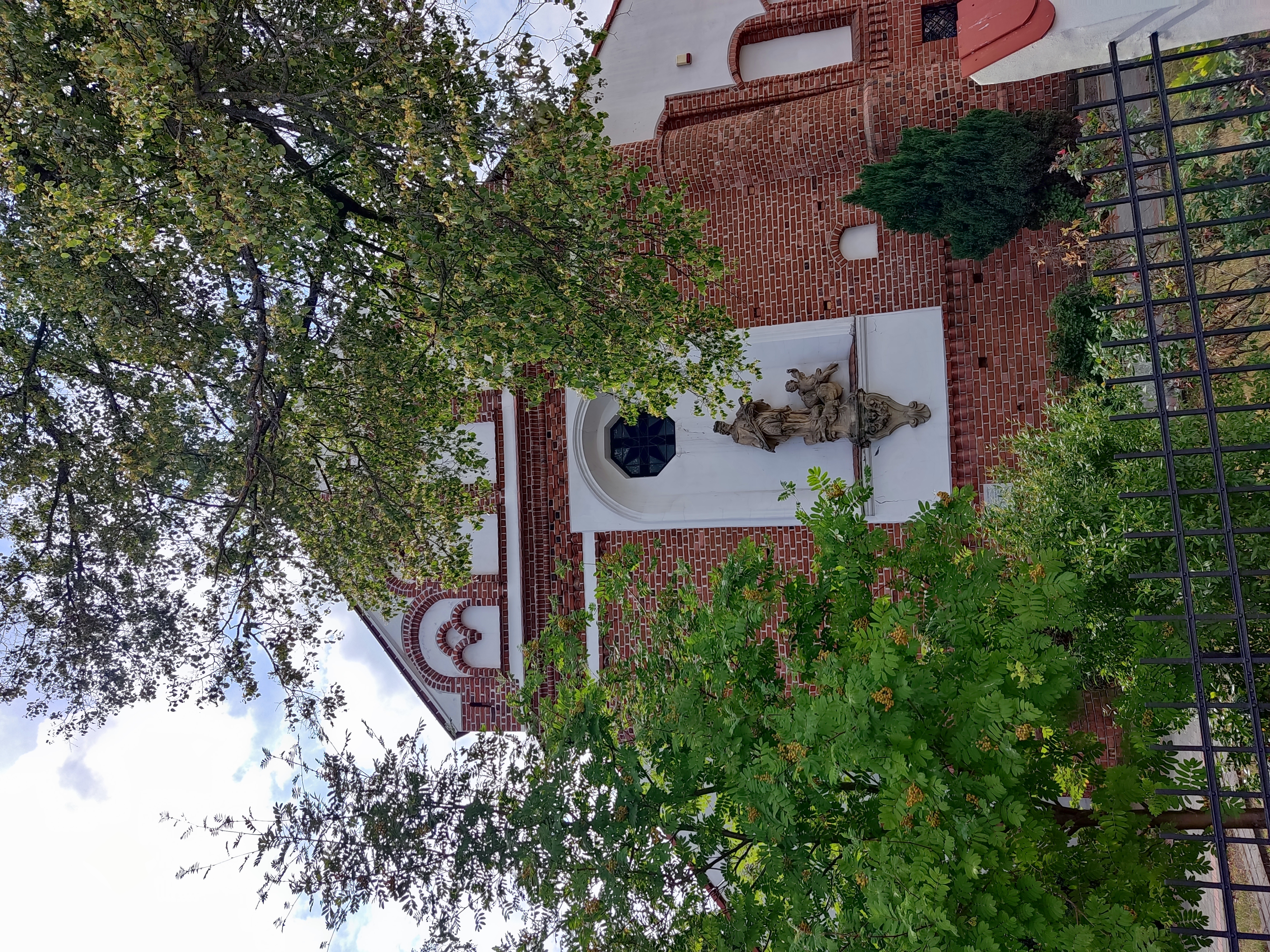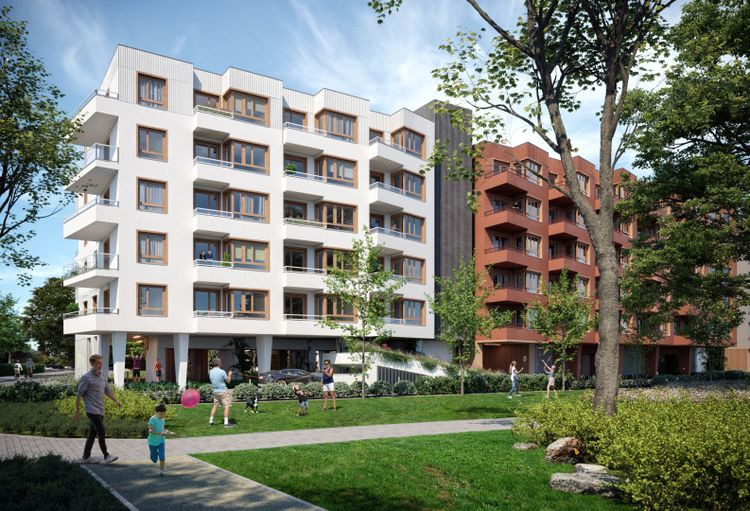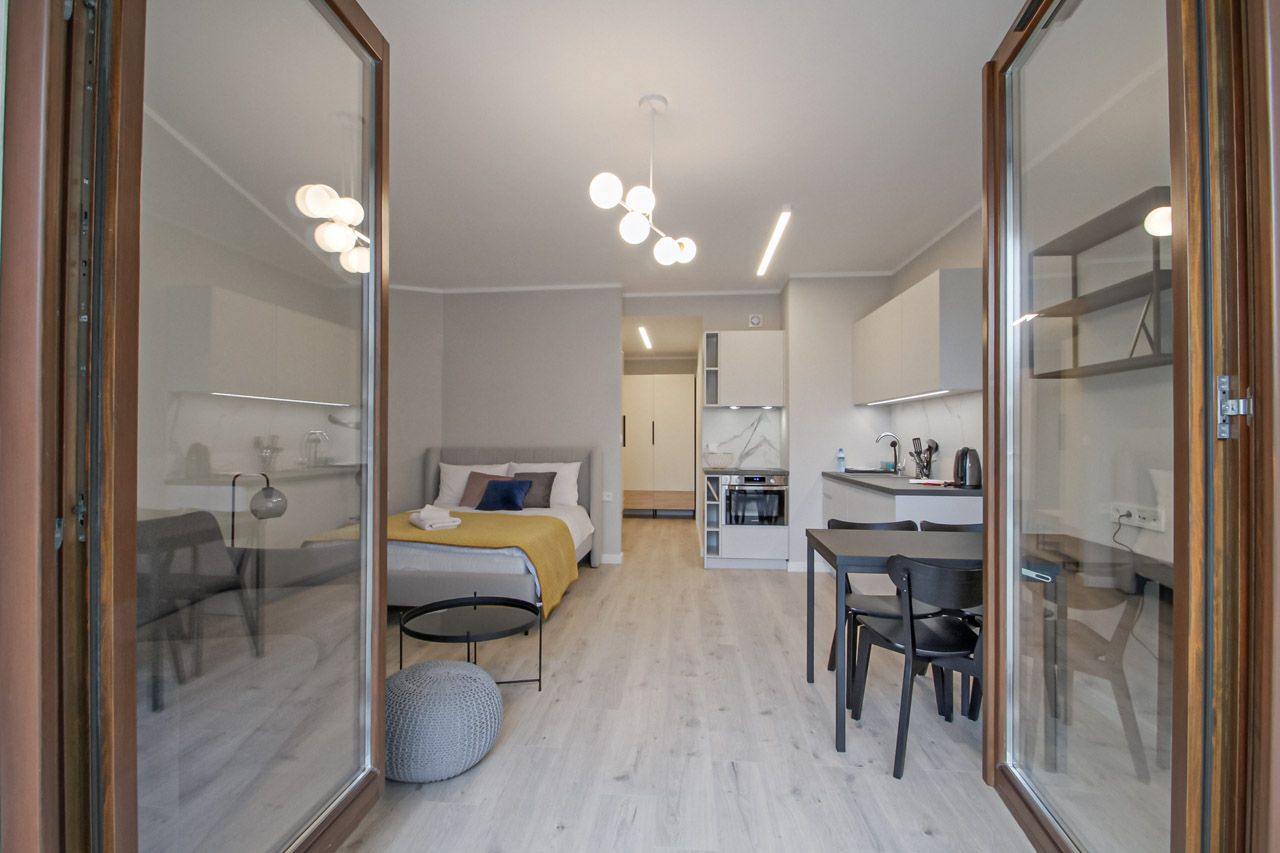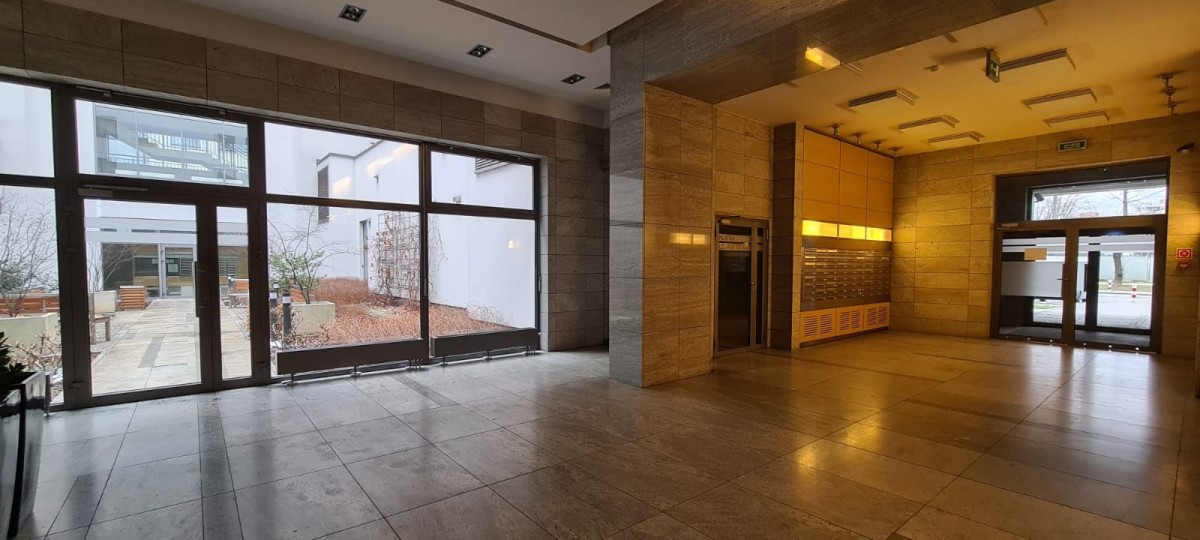Piaseczno has a rich history

Piaseczno has a rich history. Let's get to know her.
City start:
The first mention of Piaseczno as a village dates back to the 13th century, it is one of the oldest towns in Mazovia. It got its name because of its location on sandy soils on the banks of the Ezerka River, which at that time was called Ezernaya. In the Middle Ages, it was a princely village located on the road between Warsaw and Czersk.
Piaseczno, owned by the princes of Mazovia:
In 1421 Piaseczno was a large princely possession. Piaseck's will was part of him.
On November 5, 1429, due to its strategic position, Piaseczno received the rights of a city under the Chelm law by Duke Janusz I of Wyshogrudsky, Tsekhanovsky, Zakrochimsky, Chersky and Warsaw, nicknamed the Elder. The city, founded on the German-Chelmnen law, was obliged to support the passing prince.
Soon Piaseczno became one of the centers of local trade in the south of Mazovia, acting as an intermediary in the exchange of goods and services (trade, crafts). There were changes in the spatial organization of the city, the central point of which was the market square. From the 16th century (especially since its heyday) until 1964 it was a traditional place for markets and fairs.
In 1458, land was granted and the parish was restored thanks to the efforts and donations of Princess Anna Olgimuntovich, widow of Bolesław III, who died the same year. The parish received 3 dredges of land in the village of Wola Piasecka and 1.5 dredges of municipal land.
In 1459, the princes Konrad, Kazimierz, Boleslav, Jan-Anna, sons, issued a new privilege for the city.
In 1461, an act was approved granting city rights. At that time the city had a handicraft and agricultural character.
In 1471, during the division of the district, Prince Konrad III Rudy received Piaseczno together with the villages of Leshnovola and Khilichki. At that time, the ducal court already existed here, where tribute was collected.
In 1497, Prince Konrad gave his wife Anna Radziwillovna estates, among which was Piaseczno.
On November 23, 1513, the dynamic development of crafts and trade prompted Princess Anna Radziwillovna to grant the city of Piaseczno the right to hold a fair on weekdays and establish a market day. The lack of grain tribute and market fees, as well as low rents, caused an influx of people into the city.
In 1522, Duchess Anna, Conrad's wife, died, and Piaseczno passed to her daughter, also Anna.
Further privileges were granted to the city by Queen Bona, Anna Jagiellon, Stefan Batory, Jan Kazimierz and Jan III Sobieski.
Piaseczno, owned by the Polish rulers:
In 1526, Mazovia was incorporated into the Kingdom of Poland (previously, since the 14th century, it had been his fiefdom). Piaseczno officially became the property of the king. Here sat the royal official.
The attachment of the inhabitants to the Mazovian princes, and thus the desire for the independence of Mazovia, caused disgust for the crown. In fact, the city was not transferred to the crown authorities until 1537 and the princess was deprived of all inheritance rights. In the period from 1526 to 1795 (3rd partition of Poland) Piaseczno was the royal property.
In 1537 the city became the property of the tsar and since then functioned as an out-of-town headman.
1537 Development of brewing and distillation (3rd place in the Masovian region).
In 1545, Piaseczno was included in the estate of Queen Bona, and then passed into the hands of her daughter, Princess Anna. Anna Jagiellon, sister of King Zygmunt August, later the wife of King Stefan Batory, lived here, in the estate in Khilichkov.
In 1545, by order of Queen Bona, gardens were measured out to the townspeople, which occupied part of the land that belonged to the royal household. Then passed into the hands of her daughter, Princess Anne. Anna Jagiellon, sister of King Zygmunt August, later the wife of King Stefan Batory, lived here, in the estate in Khilichkov.
In 1554, by royal grant, the townspeople received land for gardens outside the urban areas. The heyday of Piaseczno came in the second half of the 16th century, at that time there were about 200 houses and about 1200 inhabitants. Beer brewing and distilling have received special development. In 1565, there were 37 gardens on the royal plot.
In 1572-1574. Princess Anna Jagiellonka visited the starostovo estate.
In 1578, Stefan Batory approved the townspeople's right to own gardens.
In 1580, the only cobbler's guild that existed before the partitions received a royal privilege from Stefan Batory, later confirmed by successive rulers of Poland.
In 1584 Piaseczno became the property of Queen Anna Jagiellonian. The Mazovian estate, including Piaseczno, was given to her for life.
At the turn of the 16th and 17th centuries, the city was destroyed by numerous fires and lost its significance. The cycle of development started in the time of Janusz I ended with the Swedish invasion in the middle of the 17th century.
1619 - 1620 Jan Raciborski - the owner of the village of Zgorzala founded a new hospital. In fact, it began to operate only after 1630.
In 1649, Jan Kazimierz granted the city the right to hold fairs. He confirmed this by decree of 21 february 1662.
1659 Swedish invasion. The war especially affected the neighborhoods of Warsaw. Piaseczno and the surrounding villages supplied the Swedish troops. There was an economic crisis aggravated by the war. The city was empty.
In 1670, Michal Koribut Wisniewiecki confirmed the rights granted by Jan Kazimierz.
In 1677, Jan III Sobieski confirmed the grants and established three more fairs.
In 1726, August II granted the city a privilege confirming the existing rights of the city and expanding the powers of the commune. The privilege was protective for the townspeople. Piaseczno had the Magdeburg Law, which expanded the powers of the city council. The municipality could charge for the cobblestones and market fees previously collected by the headman.
1730 A great fire consumed the city. Burned down, including the city archive together with the town hall.
1736 Construction of the royal residence and reconstruction of the church according to the designs of K.F. Poppelman. The initiator of the investment was the headman Józef Aleksander Sulkowski. Favorite and minister of King Augustus II the Strong.
1740 Citizens received a privilege granted by Augustus III. He established the organizational and political framework for the city. Citizens received the right to trade in all goods and power over empty areas (habitats). The hospital was handed over to the community.
First half of the 18th century. The city has returned to its splendor. The headman of Piaseczno at that time was Minister Aleksander Jozef Sulkowski, who built a royal residence in the city. It was irrevocably destroyed during the Kosciuszko uprising.
In 1777, a Turkish envoy stopped at the royal residence in Khilichki. It was Numan Bey, the last envoy of the Ottoman port to King Stanislav August Poniatowski.
1790 Representatives of the city authorities from Piaseczno signed in Warsaw i.e. an act of unification of the royal cities. The political activity of the bourgeoisie increased.
1792 Piaseczno, by royal decree, was to carry out a reform of the city authorities in accordance with the recommendations of the Commission of Good Order.
1793 Second partition of Poland.
1794 Kosciuszko uprising.
On July 9 and 10, 1794, the largest battle in the history of the community took place - the battle of Golkuwa near Piaseczno. General Józef Zaionczek commanded the Polish side, and General Fersen the Russian side. Losses amounted to 180 killed, 136 wounded and about 100 missing. The city was burned down, only the church and houses located in Zastava survived (behind two large ponds in the city center, thanks to which the fires did not spread to the southern part of Piaseczno). In the city there was a part of the Cossacks of the Suvorov army, stationed in the church.
Town Hall in Piaseczno:
The former splendor of the city and its traditions are evidenced by the town hall, located on the market square. The original town hall - the seat of city authorities and the place where privileges were preserved - was burned in 1655. The next one burned down in 1730. Then all the documents stored in the city archive burned down. Among the documents, the royal privilege of Augustus II the Strong, issued in 1726, burned down. This act was restored by the citizens in the form of an extract from the Crown Metric on January 31, 1733.
The townspeople rebuilt the town hall in the middle of the 18th century. The two-story building stood on a square foundation in the middle of the market square. The wooden town hall was burnt down during the Kosciuszko uprising in 1794. After 1815, the Russian authorities set about rebuilding Polish cities, ordering the construction of brick town halls in a row of residential buildings located on the market square. The project of the residence of the municipal authorities in Piaseczno was developed by the provincial builder Hilary Shpilovsky.
The current building was erected in the classicist style in 1823-1824. An unusual element that distinguishes the Piaseczek Town Hall from other buildings of this type in Mazovia is the crescent moon that was installed on top of the tower before the First World War. It is dedicated to the stay of the Turkish envoy Numan Beji in 1777.
Piaseczno under Prussian and Russian rule:
1795 Third partition of Poland. After the third partition of Poland, Piaseczno found himself within the borders of the Prussian partition in the area of the so-called. South Prussia.
In 1801 - 1806. a colonization campaign was carried out in the suburban territories belonging to the former Pyaseksky headman. The colonists came from the Duchy of Württemberg and the Duchy of the Palatinate. The following estates were created for them: Alt and Neu-Ilvesheim (Stara and Nova Ivicna), Ludwigsburg (Jusefoslav) and Schwenningen (Sviniary, from 1820 Orenzhno). The Jewish population, who until then had been forbidden to settle, began to flock to the city.
The Prussian period (Prussian partition) did not last long in Piaseczno, only 11 years.
In 1806 the city was occupied by Napoleon's army. In 1806/1807. French cavalry was stationed in Piaseczno.
In 1807-1815 Piaseczno was part of the Duchy of Warsaw.
In 1808–1811 The 1st Polish Cavalry Rifle Regiment was stationed in the city.
In 1813 Piaseczno was occupied by the Russian army, which remained there until 1915.
1815 Foundation of the Kingdom of Poland on the basis of the decision of the Vienna Congress and included in compoundin the Russian Empire. Piaseczno, which was then in the Warsaw district (later district), in the Mazowieckie Voivodeship (later in the Warsaw province) was part of it. It was a government (national) city.
In 1820 Piaseczno had 893 inhabitants of Polish origin and 171 Jews. Jews were forbidden to settle and own houses in Piaseczno until 1795. There were 101 houses in Piaseczno, but only 9 brick houses, because people preferred to live in huts and dugouts.
In 1825 a road was built from Warsaw to Kalwaria Hill and Warka. The road ran through the city of Piaseczno, which led to a significant increase in the position of the city. Soon a narrow-gauge railway was launched, connecting Piaseczno with Warsaw. This was a factor that contributed to the development of the then village. In 1898, the lines began to pass through Sluzhev and Wilanow, and in 1899 to Guru-Kalwaria.
Prior to the outbreak of World War I, Piaseczno experienced a period of economic boom.
1863 Beginning of the January Uprising. The fighting took place in the nearby forests of Chojnów, which served as a refuge for the insurgents. Many residents were repressed. 12 rebels were killed, their grave is in the parish cemetery.
1869 For active participation in the January Uprising, the tsarist authorities in 1869 deprived Piaseczno of any privileges, including city rights. On the basis of the same royal decree of 1869, in the middle of 1870, 25 other cities in the Warsaw province also lost their city rights, becoming municipal settlements.
A Jewish community was established in the city.
In 1891, Cecilia Plater-Ziberkuvna founded a village school for girls in Piaseczno.
In 1897, according to the census, 2760 inhabitants lived in Piaseczno. Catholics had a slight advantage (41.5%) over the Jewish population (40%). There were relatively many Protestants in Piaseczno (17.9%), who, in part, were descendants of German colonists.
1898 Construction of the narrow-gauge railway Warsaw - Sluzhev - Ezerna - Piaseczno.
1899 Construction of the line Warsaw - Piaseczno - Góra Kalwaria. Transport links contributed to the development of the city.
1903 The Volunteer Fire Department was established.
In 1913 Piaseczno had 4,395 inhabitants. During this period, Piaseczno can be attributed to a city with a good communication infrastructure. This was very important for crafts and trade, which could thus develop intensively. Gradually the town of Piaseczno became the center of the surrounding settlements.
1914 World War I begins. Piaseczno and its environs became the scene of German-Russian battles. The city was empty.
September and October 1914 Piaseczno and its environs became the scene of fierce battles between Germans and Russians for Warsaw. The city became depopulated, as most of the inhabitants took refuge in the capital. As a result of the fighting, about 20 houses in the area of the market square were completely destroyed, and the church was damaged.
In August 1915, Piaseczno was re-occupied by the Germans.
Piasechno in the interwar period:
1916 City rights of Piaseczno restored. At the same time, the village of Wola Piasecka was incorporated into the city.
May 1917 The first meeting of the city council was held.
1918 The city's own power station was launched. There were only two small industrial enterprises in the city: the Zbigniew Kobylansky and Co. steel products plant, which produced knives, cleavers and scythes, and a steam mill.
1918 Restoration of independence.
In November 1918, firefighters disarmed the German gendarmerie station in Piaseczno and sent the arrested soldiers by train to Warsaw; thus began the period of independence after 123 years of partitions. Already on November 13, the city council elected the mayor, jurors and delegates of the district parliament. At that time, 6956 people lived here, including 3956 Catholics, 2816 Jews, 182 Evangelicals and 2 Orthodox. Piaseczno in Poland was part of the Warsaw poviat of the Warsaw Voivodeship.
1919 Applications were submitted for the annexation of the farms of Polko, Khilichki, the villages of Khilichki, Juzefoslav, Orenzhna, Sedliska, the settlement of Vyhody, the village and estate of Zhabenets, the village of Zgorzaly and the forestry from Zalesie to Piaseczno.
On December 14, 1919, the first city council elections were held in independent Poland.
In 1921, Piaseczno was one of the largest cities in the vicinity of Warsaw (5615 inhabitants), a center of crafts and trade.
In 1924 a public bath was organized.
On June 4, 1928, President of the Republic of Poland Ignacy Mosticki visited Piaseczno. He laid the foundation of the People's House, named after him (now Jan Paul II Street). In 1933, during the belated celebration of the 500th anniversary of the city's rights, the market square was renamed Marshal Jozef Piłsudski Square. Honorary citizen of the city since 1928.
In the 1920s, dacha resort areas developed (including the urban forest areas of Zalesye Dolne and Adamov, the garden city of Zalesinek, and the residential areas of Ivichna 1, 2, 3 in 1960). At present, these areas, together with the former village of Holkow Letnisko, form an inseparable whole as one large (by area) city of Piaseczno.
1934 Warsaw-Radom railway line openedDuring the interwar period, the first plan for the expansion of the city was drawn up. The total area of Piaseczno within the administrative boundaries was 841 ha and 4093 m².
In 1937, by decision of the Warsaw governor, a master plan for the development of the city of Piaseczno was approved, which provided for the creation of an industrial region in the northwest. Piaseczno has traditionally been a major shoemaking center with more than 25% of workshops in relation to the total number of local crafts.
In 1936-1937 there were strikes of workers and craftsmen.
Piasechno during World War II:
On September 6, 1939, units of German tanks entered Guru-Kalvaria.
On the night of September 9-10, World War II began for Piaseczno, when units of the 54th light artillery regiment (Lodz army) exchanged fire with units of the 1st German armored division. As a result of the fighting, the buildings of several streets in the northern part of the city were damaged. Destroyed the city court on the street. Warsaw. The Wehrmacht shot 21 captured Polish soldiers and 7 residents of the city.
The German occupation began. Contributions were imposed on residents, the construction of new houses was prohibited, and a curfew was introduced. A POW camp was set up in the city.
Autumn 1940 In the southern part of Piaseczno, the invaders created a ghetto. From here the Jews were transferred to the Warsaw ghetto in February 1941.
December 1943 A sabotage railway operation was carried out near the city.
On April 1, 1944, the Home Army Organization carried out a successful action against the Arbeitsamt (Labour Bureau) in Piaseczno at ul. Mitskevich.
On January 16, 1945, the Germans left the city. They destroyed the narrow gauge railway station.
Piaseczno after World War II:
On January 17, 1945, the fascist occupation ended, the tanks of the 1st armored brigade Heroes of Westerplatte entered the city without a fight. Here was the command post of the 1st Polish Army.
February 1946 According to the census, 6,682 people lived in Piaseczno. The town housed the Ormond Bicycle Factory, a steam mill, a groats mill, a sawmill, and a woodworking factory. The largest enterprise was the workshops of the Warsaw suburban railway.
On July 1, 1952, Piaseczno became the center of the county (until May 31, 1975, when the counties were liquidated), which distinguished it from neighboring cities. The administrative borders were expanded by joining Golkow-Letnisko, Miasto-Las-Zalessie, Wulka-Kozodavska-Letnisko, Orenzhna and Khilichka Dvorskie.
The industrialization of the city began.
1956 The first plant was founded, from which the industrialization of the city began - the ZELOS Oscilloscope Lamp Plant, where, in particular, cathode-ray tubes were made for the first Polish Belweder television receivers.
1957 Establishment of the LAMINA transmission lamp factory.
1964 Municipal cemetery founded in Piaseczno.
1972 Gasification of the city started.
1972 - 1979 Construction of a city bypass.
1976 - 1979 Construction of Polcolor color kinescope factory.
1983 A trolleybus line connecting Piaseczno with Warsaw was launched instead of the MZK bus line that existed since 1971.
The dr Irena Eris cosmetics factory was opened.
1990 Democratic city council elections.
1991 The French concern Thomson bought the Polkolor plants.
1996 Opening of French hypermarkets Auchan and Leroy Merlin.
1999 Piaseczno again became a county town. After the territorial reform of 1999, the position of the city strengthened again with the creation of Piaseczno poviat. The fact that it is the center in relation to the gminas that are part of the county: Gura Kalwaria, Konstancin-Jeziorna, Tarczyn, Lesznowola and Prazmow, for many years consolidated the dominant position of the city.
Opening of an indoor pool in the city sports and recreation complex.
2003 Legendary Technicolor opens a state-of-the-art DVD manufacturing plant.
On December 17, 2004, the European Commission decided to provide financial support under the Cohesion Fund for the Piaseczno Water and Wastewater Management Program project.
November 16, 2005 opening of Fashion House outlet center.
2006 A new building of the county police department was put into operation.
On January 30, 2008, a new building of the district court and the regional prosecutor's office was put into operation in Piaseczno.
Today, Piaseczno is experiencing a renaissance, rapidly increasing the number of inhabitants. Many new enterprises, both domestic and foreign, are being created, new residential and public buildings are being erected.
Blog

Prices for building materials in Poland in December 2023
Prices for building materials in Poland in December 2023

Investment rating of Warsaw
Investment rating of Warsaw Leading European real estate analysts in November 2021 compiled a rating of the largest European cities and capitals on the overall prospects in the real estate sector






